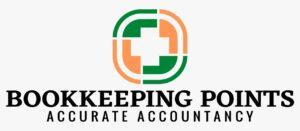A VAT (Value Added Tax) return  is a document that businesses are required to file with their relevant tax authority in order to report the value added tax they have collected and paid during a certain period of time. VAT is a consumption tax that is added to the price of goods and services, and businesses act as a collector of the tax on behalf of the government. A VAT return typically includes information on the business’s sales and purchases, including the total value of taxable sales, the amount of VAT charged on those sales, the total value of taxable purchases, and the amount of VAT claimed as input tax credit. The return also shows the net amount of VAT due or to be refunded by the government. The frequency of filing VAT return varies by country, it can be monthly, quarterly or annually. It is important for a business to keep accurate records of their VAT transactions, as well as to file their VAT returns on time, to avoid penalties and fines.
is a document that businesses are required to file with their relevant tax authority in order to report the value added tax they have collected and paid during a certain period of time. VAT is a consumption tax that is added to the price of goods and services, and businesses act as a collector of the tax on behalf of the government. A VAT return typically includes information on the business’s sales and purchases, including the total value of taxable sales, the amount of VAT charged on those sales, the total value of taxable purchases, and the amount of VAT claimed as input tax credit. The return also shows the net amount of VAT due or to be refunded by the government. The frequency of filing VAT return varies by country, it can be monthly, quarterly or annually. It is important for a business to keep accurate records of their VAT transactions, as well as to file their VAT returns on time, to avoid penalties and fines.
In the United Kingdom, VAT (Value Added Tax) returns are filed with Her Majesty’s Revenue and Customs (HMRC) on a regular basis. The frequency of filing VAT returns depends on the type of VAT scheme the business is registered for.
- Standard VAT scheme: VAT returns must be filed every three months, and the due date for filing and paying VAT is usually one calendar month and seven days after the end of the VAT return period.
- Annual Accounting scheme: VAT returns must be filed annually and the due date for filing and paying VAT is the same as the VAT return period end.
- Flat Rate scheme: VAT returns must be filed every three months, and the due date for filing and paying VAT is usually one calendar month and seven days after the end of the VAT return period.
VAT returns must be filed electronically via the Government Gateway, unless a business is exempt from this requirement. A VAT return includes information on the business’s sales and purchases, including the total value of taxable sales, the amount of VAT charged on those sales, the total value of taxable purchases, and the amount of VAT claimed as input tax credit. The return also shows the net amount of VAT due or to be refunded by the government. Businesses must keep accurate records of all their VAT transactions and make sure that their VAT returns are accurate and submitted on time, to avoid penalties and fines.
It is important for businesses to note that there are different VAT rates for different goods and services, and it is their responsibility to charge the correct rate of VAT to their customers and claim the correct amount of input tax credit on their VAT return.






